Idaho, the Gem State, is famous for its stunning landscapes and outdoor adventures and boasts a rich hunting heritage passed down through generations. The state’s diverse bear population makes it a prime destination for avid hunters seeking thrilling encounters with these majestic creatures. Idaho bear hunting awaits!
From the towering mountains to the vast wilderness, Idaho provides an ideal habitat for black and grizzly bears. Exploring this enchanting land in pursuit of bears is an experience that immerses hunters in the heart of nature.
Idaho Bear Hunting Species
Differentiating between black bears and grizzly bears in Idaho
When embarking on a bear hunting adventure in Idaho, it is crucial to understand the distinctions between the state’s two prominent bear species: black bears and grizzly bears. While both are magnificent creatures, they possess unique characteristics that set them apart. Black Bears:
Astonishingly, black bears come in a range of colors, including various shades of brown, cinnamon, and even jet black. Their name may be misleading; they can also have a white patch on their chest or other body parts.
Black bears are smaller than grizzlies, with males typically weighing between 200 to 600 pounds (90 to 270 kilograms) and females ranging from 100 to 400 pounds (45 to 180 kilograms). These agile creatures are known for their climbing abilities and can often be found atop trees.
Grizzly Bears
The formidable grizzly bear is notably larger than its black counterpart. Males commonly weigh between 500 to over 1,000 pounds (225 to over 450 kilograms), while females generally range from 300 to 600 pounds (135 to 270 kilograms). One distinctive feature of grizzlies is the muscular hump on their shoulders.
Their fur coloration varies from light blonde to dark brown or almost black. Grizzlies are known for their immense strength and powerful forelimbs, enabling them to dig extensively.
Characteristics, behavior, and habitat preferences of each species
Black Bear Characteristics
Black bears are omnivorous creatures with an adaptable diet that includes berries, nuts, insects, small mammals, and occasionally carrion. They are known for their keen sense of smell, which helps them locate food sources from miles away. Unlike grizzlies, black bears have a more docile temperament and avoid confrontations with humans.
Black Bear Behavior
Black bears are typically solitary animals, except during mating season or when cubs accompany a mother. They are skilled climbers who often retreat to trees as a protective measure against predators or perceived threats. These bears prefer forested areas with ample cover, but they can also be found in meadows or near water sources.
Grizzly Bear Characteristics
Grizzly bears have a more carnivorous diet than black bears, which includes fish (especially salmon), small mammals, carrion, insects, and berries. Their strong jaws and sharp claws make them proficient hunters. While grizzlies have an exceptional sense of smell like black bears, they are generally considered more aggressive and territorial.
Grizzly Bear Behavior
Unlike black bears, grizzlies are known for being more social animals that often congregate in specific areas where food is abundant. These impressive creatures create large territories encompassing open meadows, rugged mountain ranges, and river valleys. They also exhibit defensive behaviors when they feel their space is being invaded.
Understanding the differences between black bears and grizzly bears is essential for bear hunters in Idaho. Recognizing their characteristics, behavior patterns, and preferred habitats allows hunters to tailor their strategies accordingly while gaining a deeper appreciation for these remarkable species that roam the state’s wilderness.
Idaho Bear Hunting Regulations and Seasons
Licensing requirements for resident and non-resident
When pursuing the thrill of bear hunting in the scenic landscapes of Idaho, it’s crucial to understand the licensing requirements for both residents and non-residents. Resident hunters must possess a valid Idaho hunting license, which can be obtained through the Idaho Department of Fish and Game. For non-residents, a separate hunting license is required, along with an additional bear tag.
It’s important to note that these licenses are not unlimited, and a quota system is in place to ensure sustainable bear populations. Therefore, applying early or seeking guidance from local outfitters or experienced hunters who can assist with the application process is advisable.
Idaho bear hunting seasons, quotas, and bag limits
Idaho offers various bear hunting seasons for black and grizzly bears, each with specific dates carefully designed to coincide with peak activity periods. The black bear season typically begins in spring, around April or May, when bears emerge from their winter dens. This season extends through late June or early July when bears become less active due to increasing temperatures.
The grizzly bear season, on the other hand, has more restricted dates due to conservation efforts aimed at protecting this magnificent but vulnerable species. It usually runs from September through November.
Hunters need to check updated regulations annually, as these dates may be subject to change. Additionally, Idaho implements strict quotas and bag limits on bear hunting activities.
These measures are implemented to maintain sustainable populations, ensure fair opportunities for all hunters, and conserve wildlife resources effectively. Quotas determine the maximum number of bears legally harvested within a designated area during a season.
Bag limits specify how many bears an individual hunter can harvest during one hunting season—typically, one bear per hunter. Hunters must familiarize themselves with these regulations and strictly adhere to them, as violating hunting quotas and bag limits can have serious legal consequences and harm the delicate balance of Idaho’s bear populations.
Essential Gear for Idaho Bear Hunting
Firearms: Choosing the Right Rifle or Bow for Bear Hunting
When venturing into the wilderness of Idaho to pursue bears, selecting the appropriate firearm is paramount—for rifles, opt for a powerful and accurate weapon chambered in a suitable caliber like .270 Winchester, .30-06 Springfield, or even larger calibers such as .300 Winchester Magnum. These will provide the necessary stopping power against these formidable beasts.
On the other hand, if you prefer a more challenging approach, using a compound bow can be both exhilarating and rewarding. Ensure your bow has sufficient draw weight and is equipped with razor-sharp broadheads specifically designed for big game hunting.
Optics: Quality Binoculars and Spotting Scopes in Bear Detection
Bear hunting requires keen observation skills to spot these elusive creatures amidst dense forests and rugged terrains. Equipping yourself with top-notch optics is essential for success. Invest in high-quality binoculars with excellent light-gathering capabilities and optimal magnification to scan vast areas effectively.
Additionally, having a dependable spotting scope allows you to thoroughly evaluate potential targets from long distances before making your final approach or shot selection. Remember, precision optics are not just luxuries but indispensable tools that significantly enhance your chances of spotting bears well before they sense your presence.
Camouflage Clothing, Scent Control Products, and Other Equipment
Bears possess remarkable senses of sight and smell that can aid their detection of human presence from afar. To avoid being detected by these astute creatures during your hunt, it’s crucial to invest in high-quality camouflage clothing that blends seamlessly with Idaho’s natural surroundings—opting for camo patterns like Mossy Oak or Realtree suited for mountainous environments can give you an edge.
Additionally, incorporating scent control products, such as scent-free detergents and sprays, can help minimize odors that might otherwise alert bears to your presence. Other necessary equipment includes a sturdy backpack to carry essential supplies like water, snacks, first aid kits, and survival tools for the unpredictable wilderness.
Choosing the right firearms, optics, camouflage clothing, scent control products, and other necessary equipment ensures you are thoroughly prepared for your Idaho bear hunting adventure. Investing in quality gear tailored to this pursuit increases your chances of success while immersing yourself fully in the beauty and thrill of the hunt.
Techniques for Tracking and Spotting Bears
Understanding bear signs: tracks, scat, claw marks, rub trees, etc.
Knowledge of bear signs is crucial when tracking and spotting bears in the wild. Bears leave behind various indicators of their presence, such as tracks, scat (also known as droppings), claw marks on trees or logs, and rub trees. Tracks can reveal the size and direction of a bear’s movement.
Fresh scat indicates recent activity in the area. Claw marks serve as territorial markers or means to sharpen their claws.
Rub trees are often used by bears to scratch their backs or leave their scent behind. By studying and understanding these signs, hunters can gain valuable insights into a bear’s behavior and whereabouts.
Scouting methods to locate prime bear habitats
Scouting is an essential part of any successful bear hunt. Each region of Idaho presents unique landscapes that attract bears due to food availability and suitable habitat conditions. One effective scouting method is to look for areas abundant with natural food sources, such as berry patches or oak stands that bear favor during specific seasons.
Additionally, studying topographic maps can help identify densely forested areas near water sources where bears typically seek shelter or forage for food. By exploring different regions beforehand and actively observing signs like fresh tracks or scat along game trails or around feeding areas, hunters can pinpoint prime bear habitats and increase their chances of encountering these majestic creatures.
Mastering techniques for tracking and spotting bears is vital for a successful hunting experience in Idaho. By familiarizing themselves with bear signs like tracks, scat, claw marks, and rub trees while implementing effective scouting methods tailored to specific regions within the state’s diverse landscapes, hunters will significantly enhance their ability to locate prime bear habitats consistently.
Strategies for Successful Bear Hunts in Idaho
Baiting: Pros and cons of using bait stations to attract bears
When it comes to bear hunting in Idaho, one popular strategy is baiting. This involves setting up bait stations to attract bears, typically using food like meat or pastries. The main advantage of baiting is that it draws bears to a specific location, increasing your chances of getting a clear shot.
Baiting can be especially effective when natural food sources are scarce or when hunting in dense forests with limited visibility. However, there are some downsides worth considering.
For instance, baiting might create a dependency on human-provided food for the bears and alter their natural behavior patterns. Additionally, it can lead to an increased risk of encounters with non-target species, such as wolves or other predators attracted by the scent of the bait
Stalking: Tips on stealthy approaches to get within shooting range
Stalking is another method employed by skilled bear hunters in Idaho. It requires patience, stealth, and a deep understanding of bear behavior. To successfully stalk a bear, moving slowly and quietly through the wilderness while looking for any signs or sounds that could give away its location is crucial. Take advantage of natural cover like trees or rocks to stay hidden as you inch closer toward your target.
Please pay attention to wind direction, as bears have an incredible sense of smell which they rely on heavily for detecting potential threats. Opt for silent footwear and avoid wearing noisy clothing materials that could inadvertently give you away.
Calling: Utilizing predator calls to lure bears out into the open
Calling is an artful technique experienced hunters use for an interactive approach with their prey. By mimicking the sounds of distressed prey or rival predators (like young cubs), hunters can pique the curiosity or territorial instincts of bears, coaxing them into revealing their location.
Bear calls, such as rabbit distress calls or fawn bleats, can effectively attract bears within range. It’s important to practice these calls beforehand and ensure you’re using the right tone and timing to increase your chances of success.
However, it’s crucial to exercise caution when calling bears, as they may become defensive or aggressive if they feel threatened. By employing these strategies – baiting, stalking, and calling – hunters in Idaho can increase their likelihood of a successful bear hunt.
Each method has its advantages and considerations, so choosing the one that best aligns with your hunting style and ethics is essential. Remember that bear hunting requires immense respect for wildlife regulations and ethical practices to maintain sustainable populations for future generations of outdoors enthusiasts.
Idaho Bear Hunting Ethics & Safety Measures
Respecting wildlife regulations & ethical practices while hunting
When engaging in the thrilling pursuit of bear hunting in Idaho, adhering to wildlife regulations and ethical practices is essential. Respecting these guidelines ensures a sustainable future for bear populations and showcases our commitment as responsible hunters.
It is crucial to familiarize yourself with Idaho’s specific hunting laws and regulations, such as obtaining the necessary licenses and tags. Additionally, be aware of any restrictions on take methods, including baiting or calling techniques.
Ethical considerations go beyond compliance with the law; they encompass a deep appreciation for the environment and its inhabitants. This means avoiding wanton waste by utilizing as much of the harvested animal as possible and supporting conservation efforts through active participation in programs that contribute to wildlife management.
Safety precautions when encountering a bear during a hunt
You are encountering a bear while on a hunting expedition can be awe-inspiring yet potentially dangerous. It is crucial to follow appropriate safety measures to ensure both your safety and that of the bear. First and foremost, being mindful of your surroundings is paramount – constantly scan your surroundings for signs of bears or recent activity, such as tracks or scat.
When you spot a bear at a distance, avoid sudden movements or loud noises that could startle them; instead, maintain your composure and observe from afar without interfering with their natural behavior. In close encounters, it is vital to remain calm and assertive without provoking the animal—never approach or attempt to feed them.
If you find yourself in an unexpected confrontation with an aggressive bear, remember that firearms should be used only as a last resort for self-defense when no other viable options are available. By respecting wildlife regulations and following proper safety precautions during encounters with bears, we can ensure enjoyable and responsible bear hunting experiences in the picturesque wilderness of Idaho.
Bear Processing & Utilization
Proper field dressing techniques for preserving meat quality
When it comes to bear hunting, the real reward lies in the delicious meat you can savor afterward. Proper field dressing techniques are essential to ensure the best flavor and quality. Once you’ve successfully harvested a bear, it’s crucial to act swiftly.
Start by carefully removing the hide and entrails. Keep the meat as clean as possible by avoiding contact with dirt or contaminants. Then, cool the carcass immediately by propping it open and allowing air to circulate. This helps prevent spoilage and preserves the taste of the meat.
Tips on processing bear meat into various dishes
Processing bear meat offers a world of culinary possibilities. There are numerous ways to enjoy this rich and flavorful protein, from roasts to sausages.
After field dressing, carefully quarter the animal, separating muscle groups for specific cuts like steaks or roasts. When processing bear meat further, it’s important to note that thorough cooking is recommended due to potential trichinosis concerns.
Experimenting with different recipes can provide an exciting culinary adventure. Slow-cooking methods like braising or stewing can help tenderize bear meat while infusing it with delectable flavors.
Consider marinating steaks before grilling them for an added burst of taste. With some creativity in the kitchen and a little patience during preparation, you’ll be rewarded with mouthwatering meals fit for any occasion.
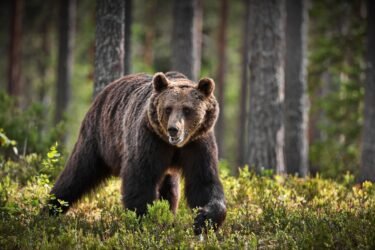
Conclusion
Idaho bear hunting offers thrilling adventure and opportunities for responsible wildlife management and conservation efforts within our great state. By understanding Idaho’s diverse bear species and adhering to hunting regulations, hunters can engage in this ancient tradition while preserving nature’s delicate balance.
Furthermore, hunters can savor the fruits of their labor by embracing proper field dressing techniques and exploring the versatility of bear meat in various culinary creations. Bear hunting allows us to connect with nature, appreciate our primal instincts, and nourish ourselves with the bounty it provides.
So, whether you’re a seasoned hunter or an aspiring outdoors enthusiast, Idaho bear hunting invites you to embark on an unforgettable journey celebrating our majestic wildlife and rich gastronomic heritage. Embrace the challenge, respect the hunt, and always leave footprints of reverence for nature’s harmonious tapestry.



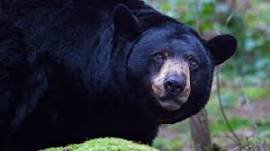
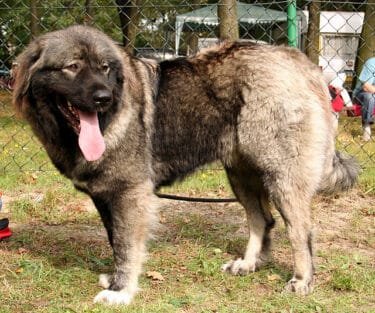
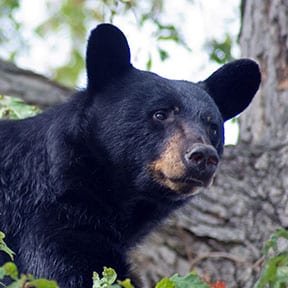
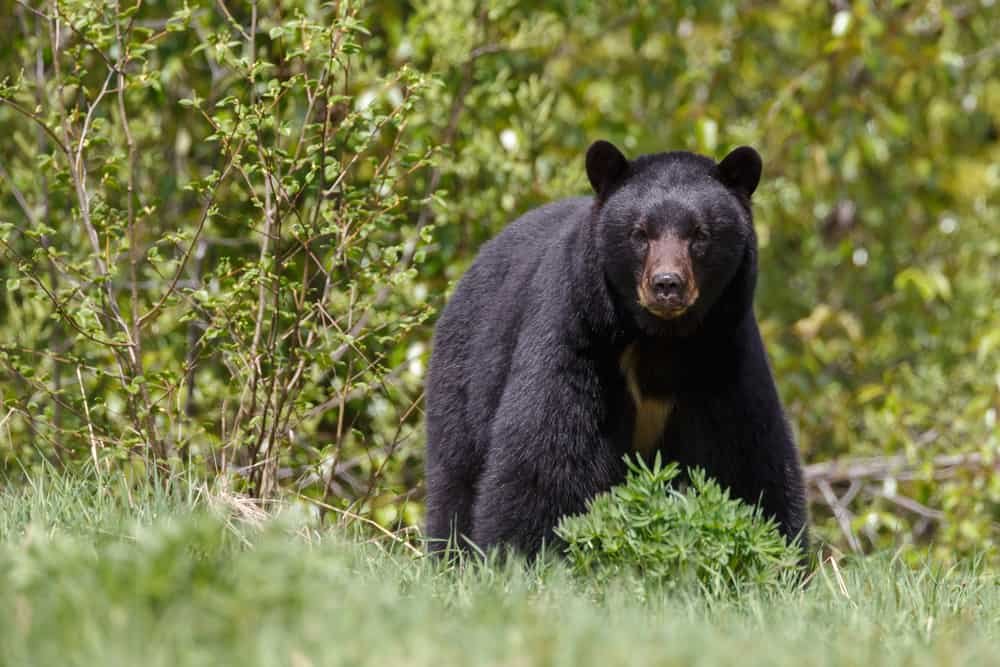
Your point of view caught my eye and was very interesting. Thanks. I have a question for you.
Can you be more specific about the content of your article? After reading it, I still have some doubts. Hope you can help me.